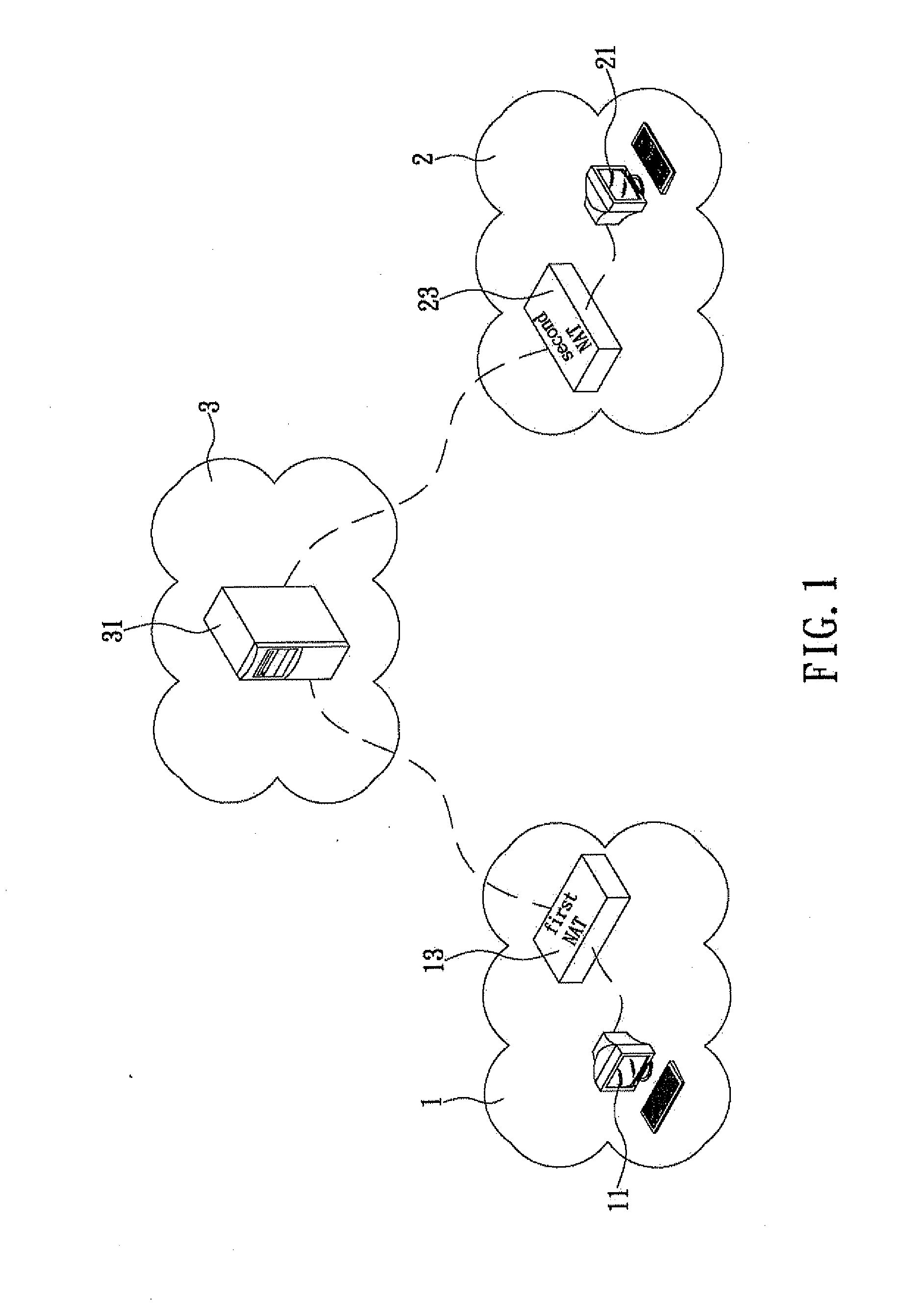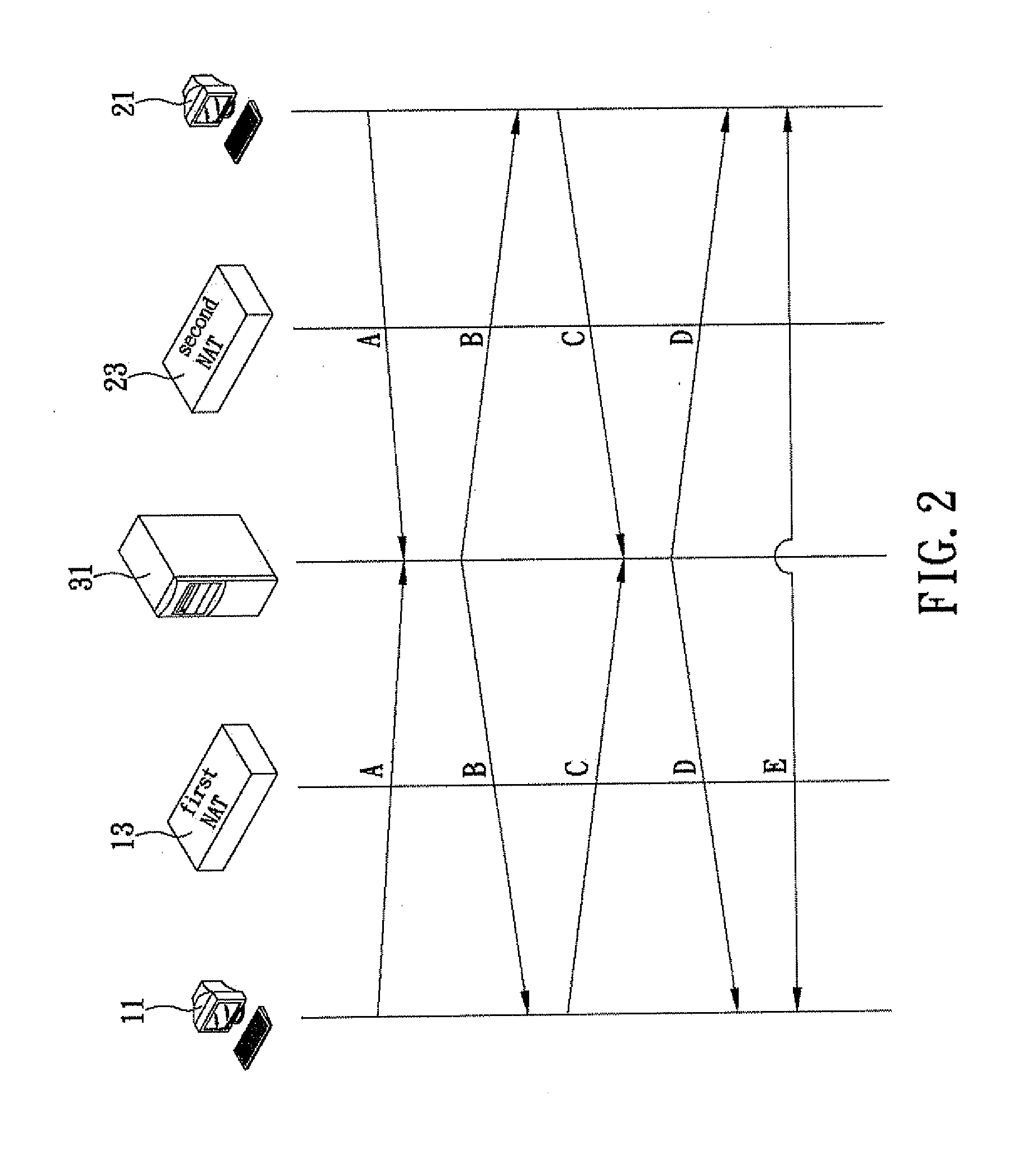Method for establising TCP connecting according to NAT behaviors
- Summary
- Abstract
- Description
- Claims
- Application Information
AI Technical Summary
Benefits of technology
Problems solved by technology
Method used
Image
Examples
Embodiment Construction
[0025]The Case Driven Call Setup (CDCS) method is targeted at User Datagram Protocol (UDP)-based network address translator (NAT) traversal and therefore not suitable for use with the Transmission Control Protocol (TCP). Moreover, the NAT information collected by CDCS includes only the NAT type, and the NAT type is divided by CDCS only into the full-cone NAT, the non full-cone NAT, and the symmetric NAT. The non full-cone NAT, however, can be further sorted by its filtering behavior into the address-restricted cone NAT and the port-restricted cone NAT. The hole punching processes of the latter two types of NATs may vary, given their different restrictions, and yet CDCS does not allow for such NAT types and hence leaves much to be desired. In consideration of the above, the inventor of the present invention studied the technical means of CDCS as well as the state tracking feature of TCP and came up with a novel technique for TCP connection-oriented NAT traversal as disclosed herein.
[...
PUM
 Login to View More
Login to View More Abstract
Description
Claims
Application Information
 Login to View More
Login to View More - R&D
- Intellectual Property
- Life Sciences
- Materials
- Tech Scout
- Unparalleled Data Quality
- Higher Quality Content
- 60% Fewer Hallucinations
Browse by: Latest US Patents, China's latest patents, Technical Efficacy Thesaurus, Application Domain, Technology Topic, Popular Technical Reports.
© 2025 PatSnap. All rights reserved.Legal|Privacy policy|Modern Slavery Act Transparency Statement|Sitemap|About US| Contact US: help@patsnap.com



